#Lepus alleni
Text
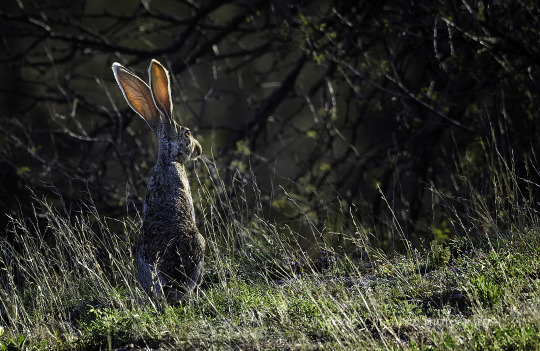
Antelope jackrabbit (Lepus alleni)
2 notes
·
View notes
Text
Creature Awaits #223
Each week I plan to feature an amazing creature, admiring God's fantastic artistry. Hopefully it’ll brighten someone’s day to see something new and interesting if they haven’t seen it before. : )
A special feature for my husband - Hope he has a wonderful birthday this year! ❤️
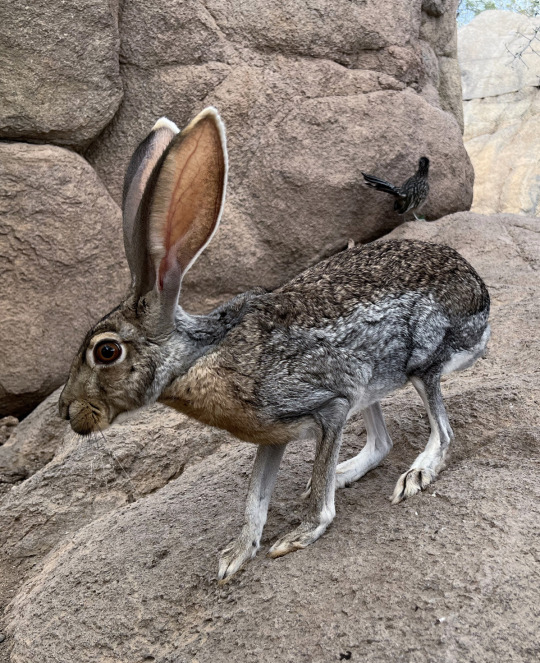
(Beautiful still taken by brilliant photographer, Frank Fujimoto (CC BY-NC-ND 2.0 - cropped for format))
The Antelope Jackrabbit
Scientific Name: Lepus alleni
Region: Southern Arizona southward into Mexico
Size: About 20.5"-22.8" (~52cm-58cm) long, not counting the head and tail
Interesting Notes: This beautiful hare is most active at twilight and throughout the night, but will occasionally be active in the day when there's enough cloud cover to shield them from direct sunlight. (Sounds like someone else I know……….Happy Birthday, Dear! ^^)
4 notes
·
View notes
Text

Antelope Jackrabbits (Lepus alleni), family Leporidae, Southern Arizona, USA
photograph by @Kat Guellich
362 notes
·
View notes
Text
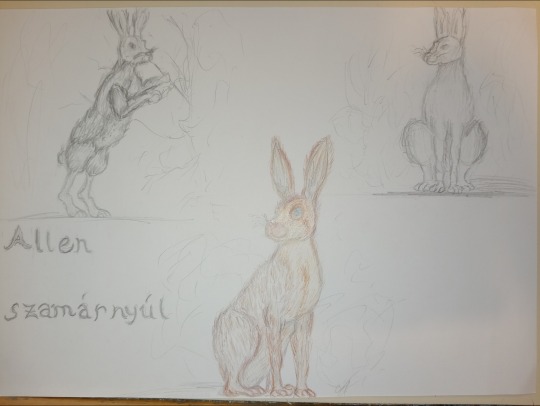
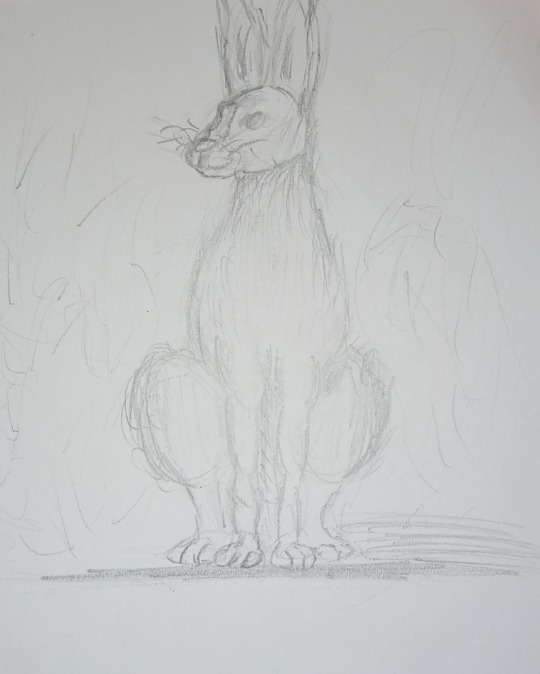
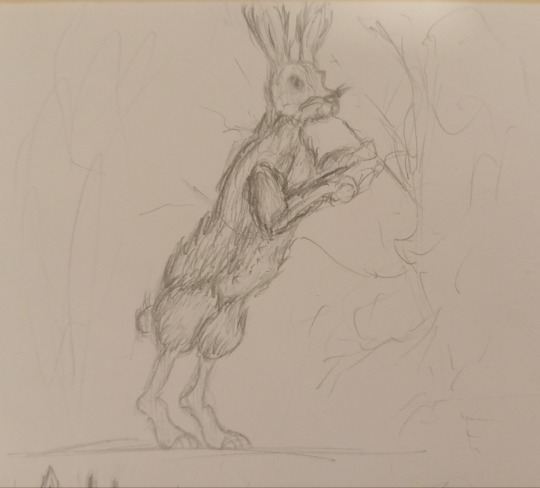
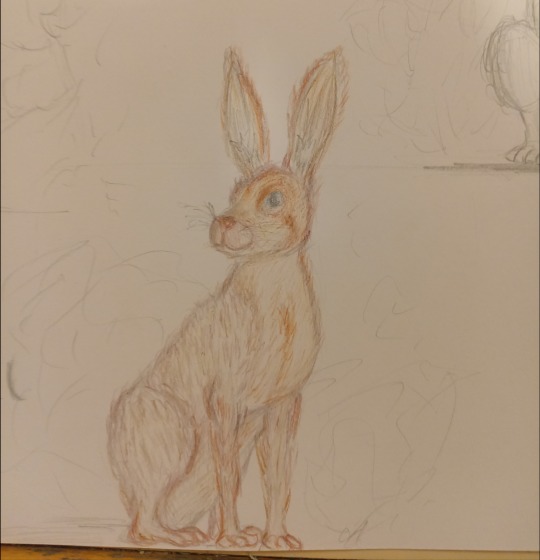
I drew some hares at school (Lepus alleni)
[I messed up its hungarian name, it's Allen-szamárnyúl]
9 notes
·
View notes
Video
Antelope Jackrabbit (Lepus alleni) by troupial
Pausing briefly before speeding away. Sonoran desert, Pima County, Arizona.
9 notes
·
View notes
Photo
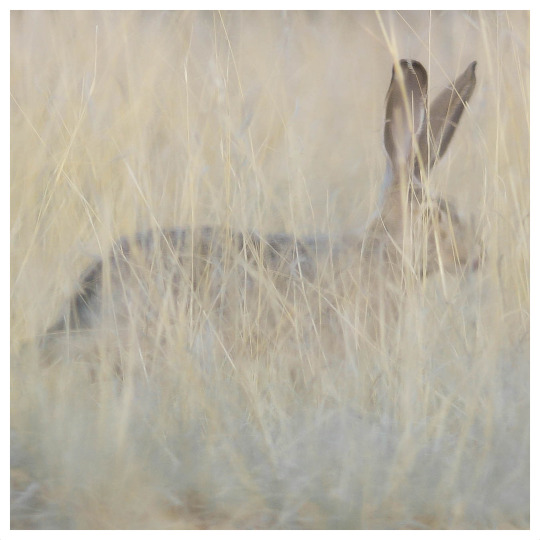
Jack.
Probably a blacktailed jackrabbit (Lepus californicus). Antelope jackrabbits (L. alleni) also occur here, but with so much cover, really how can you tell? All of my jackrabbit sightings are like this: a brief flash of movement, quick concealment in the grasses, and just a glimpse of those long ears.
In Cochise County, near Hereford, Arizona.
138 notes
·
View notes
Text



OK I will have you know that I am in love with this AU, thank you for sharing aisygduahsodi.
If you ever write anything or do art, please feel free to share! I crave good Beast Machines content that deviates from canon. Multiverse shenanigans are my crack.
The events of my AU unfold similarly, minus Jetstorm’s alternate beast-mode (and that he manages to claw his way out of Blackarachnia’s webbing before the DNA scan can fully finish). There’s no confrontation between him and her immediately afterward since he books it clear out of there. Thrust finds him later, and they hide away from Megatron knowing that showing up half-reformatted in the Grand Mal is probably a Very Bad Idea.
ALSO when my husband @grappler-douche and I first saw your last ask, we spent ages agonizing over what a good idea for a reformatted Thrust beast-mode would be. WE DID SOME BRAINSTORMING and ideas happened.
1) Northwestern Wolf (Canis lupus occidentalis)
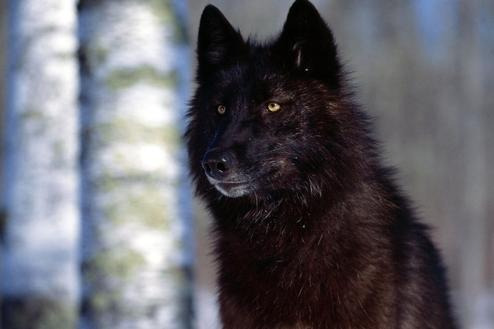
Also called a Canadian timber wolf or Alaskan timber wolf.
My main reasoning for this is that it’s a reference to the awful red herring where Thrust was implied to be Silverbolt. Like. It was a good red herring in theory, but the writers didn’t do anything with it after the fact. It was a plot thread that went nowhere. I’m still mad about it.
Plus, while the “lone wolf” motif is cool, the fact is that wolves IRL do really badly by themselves. They get thrashed around and usually starve to death without their own pack to back them up. Giving Thrust the wolf-mode a reference to how poorly he does on his own without Jetstorm to back him after In Darkest Knight. “Six against one! No one can win against those odds...” This also serves as a throwback to how much of a fun time Waspinator had during Beast Wars. Wasps are a social species, too.
Thrust also has that nice growly voice. Grr. Bike dog go vroom vroom bark.
2) Red Deer (Cervus elaphus)
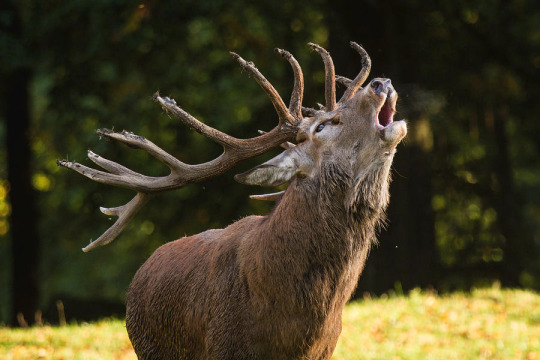
THIS IS THE ONE that my husband and I decided on for my particular AU but aisdguhas. I ended up with more justification for this than the timber wolf, if you can believe it.
One of the themes that I like to focus on when writing Thrust is his lingering frustration with being compared to Silverbolt, despite being his own person. Wolves are natural predators to deer. Thrust turning into a deer is an immediate and aggressive rebuttal to that, elevating him to the status of Silverbolt’s foil without putting him back in his shadow (i.e. giving him the previously mentioned wolf-mode).
Stag bellowing is also referred to as “roaring.” Bikes roar. My intelligence is fleeting.
Red deer are also one of the largest deer species. Thrust going from being the smallest of the Vehicon generals to having a decidedly “large” beast-mode is 100% a flex. He deserves it for all the shit he went through. The antlers in his beast-mode could also be incorporated into the handlebars/exhaust feature of a potential secondary bike-mode. Because of course he would still be a bike.
My husband’s humanverse version of Thrust (Thaddeus) is also from Red Deer, Alberta. It’s funny. Also Thaddeus is trans, and does with high enough testosterone levels can still have antlers! Deer are neat. Five antlered white-tailed females cropped up during the 2011 Missouri deer harvest, which is also the state where Thrust’s VA Jim Byrnes is from. 2011 is when I first watched Beast Machines. Look I don’t make the rules I just go where the coincidences take me.
Stags are also notorious for getting themselves tangled up in the antlers of their rivals when fighting, which can lead to them dying from exhaustion. Thrust (quite literally) died fighting Cheetor at the end of Beast Machines, only stopping when his power source in Waspinator’s spark was removed. The fight was already a direct mirror to the “first” fight of Beast Wars being against Cheetor and Waspinator. I am depressed.
3) Antelope Jackrabbit (Lepus alleni)

Also depressed, also very fast, and also will fight you to death. Thrust could be any hare species, tbh.
ANYWAYS THERE YOU GO my headcanons are bad.
#beast machines#beast wars#headcanon shiiiiiiiit#i spent way too much time thinking about all this stuff
5 notes
·
View notes
Photo

Antelope Jackrabbit (Lepus alleni), Cochise County, Arizona.
52 notes
·
View notes
Text
When your crack fic gets away from you and you suddenly have 20 tabs open ranging from scientific discoveries of the 19th century, to biographies of composers, to historical ship designs, to trade routes in the 19th century, to the invention and design of dirigibles, to the voyage of the HMS Beagle... anyway, what rabbit hole have I dropped into? (probably of the species Lepus alleni)
25 notes
·
View notes
Photo
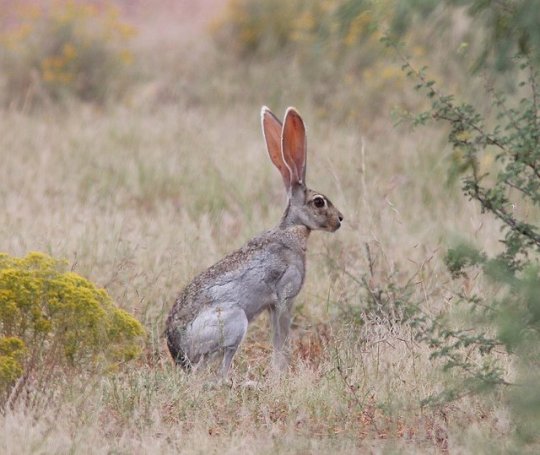
Antelope Jackrabbit (Lepus alleni)
The Antelope Jackrabbit of Arizona and Mexico uses its long legs to reach a top speed around 44 m.p.h., more than enough to escape a bobcat.
Antelope Jackrabbits are the biggest North American hare species, up to 22 inches long and as much as 9 lbs. Their giant white-tipped ears wave over their heads around 6 inches high, and might help Jackrabbits moderate their body temperature.
They prefer hilly grasslands over desert ecosystems, unlike other jackrabbit species of the Southwest. Antelope Jackrabbits bear their babies in shallow scrapes, but the babies don’t stay put long. The wide-eyed leverets can hop as soon as they’re born, and spend their hours quietly hiding while their mother forages, only feeding when she returns to quickly nurse at dawn and dusk.
photograph by Alan Schmierer | Flickr
via: Peterson Field Guides
71 notes
·
View notes
Photo
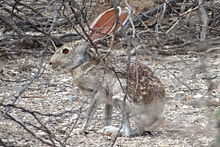


224) Antylopa jackrabbit, antelope jackrabbit (Lepus alleni), występuje w południowej Arizonie i północno-zachodnim Meksyku, jest gatunkiem zająca północnoamerykańskiego. W tym zakresie zajmuje suche obszary pustynne. Gatunek ten jest umieszczony w rodzinie Leporidae, która jest w porządku Lagomorpha. Męskie i żeńskie antylopy jackrabbits mają identyczny wygląd. Gatunek ten ma duże rozmiary z długimi, spiczastymi uszami i wyraźnym ubarwieniem sierści. Zając ten ma biały brzuch, jasnoszare boki, grzbiet z czarnym i pomarańczowym zabarwieniem na szyi i klatce piersiowej. Jest podobny do gatunków takich jak czarny ogoniasty i biały bokobrody. Jest najbardziej aktywny podczas zmierzchu (zmierzchowy) i w nocy (nocny), ale może być aktywny w ciągu dnia, gdy warunki są sprzyjające (duże obłoki chmur). Żywi się kaktusami, liśćmi mesquite i inną roślinnością. Podgatunki: Lepus alleni alleni Lepus alleni palitans Lepus alleni tiburonensis.
0 notes
Text
Went out for a run tonight
Got into a race with a Lepus alleni. Kicked its ass!
0 notes
